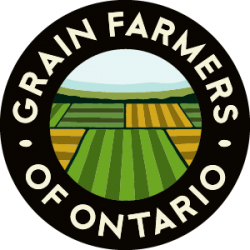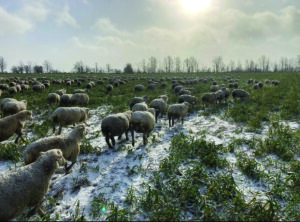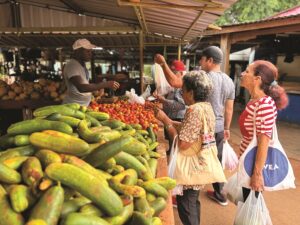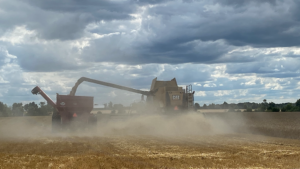Supply and demand pricing
THE ONTARIO WHEAT MARKET
WINTER WHEAT PLANTING in the fall of 2013 was somewhere around 750,000 acres. The long cold winter and some thaw and refreeze events in the spring resulted in a larger portion of winter kill than we have seen in a while, resulting in an estimated 600,000 harvested acres of winter wheat. About 60,000 – 70,000 acres of spring wheat were planted in 2014.
Harvest was a stop and go progress due to rain events throughout July, August, and September. This did not have as great of an impact on overall quality as it could have.
Typically, we see a higher incidence of sprouting with wet weather; or, if there had been a primary infection of Fusarium, wet weather later in the growing season can spread this fungi through the wheat head and cause a secondary infection. Some areas in Ontario did see some downgrading of their wheat, but the majority graded as number 2.
Local basis levels remained strong through much of the harvest despite futures values falling through the summer and into September. This decline was mainly in sympathy with falling corn and soybean futures and also due to a reduction of tensions in the Crimea that allowed grain exports to continue in that region. In the United States, record soybean and corn crops were expected to bring large carryout stock numbers which resulted in futures falling for both commodities.
While global wheat inventories remain strong, there is still significant demand for high quality wheat worldwide. Wheat in Western Canada has had some quality issues this year, as has Europe and the Black Sea region. This should increase the value of our high quality, high protein wheat given the strong global demand for good quality milling wheat.
Wheat harvest futures values fell to well below $5.00 per bushel towards the middle to end of September, and since that time we have witnessed a rally in the futures market. Corn and soybeans have also rallied in this time frame due to a slow harvest of soybeans coupled with very low carryout stocks from last year (corn prices are moving in-step with soy futures).
WHAT TO WATCH FOR
Farmers should watch these rallies as there may be opportunities to price some grain. Commodities are cyclical and we have had a few decent years of prices. Strong corn and soybean prices triggered increased acres planted, not only in the U.S., but worldwide.
Soybean harvest was delayed time and again this past fall due to the weather; this impacted winter wheat plantings. It is estimated that Ontario planted between 500,000 – 600,000 acres in the fall of 2014. Given that there were three million acres of soybeans planted in 2014, it was expected that closer to one million acres of winter wheat would follow in rotation. While there will be adequate supply for domestic
use, there could be local supply and demand issues that could result in some stronger pricing.
WHAT WE NEED
For commodity markets to remain strong, China needs to continue buying soybeans. Their appetite for soybeans is necessary to keep global stocks from becoming too burdensome which should keep prices relatively strong. Global demand for corn also needs to continue to increase. Wheat is considered a substitute for corn, so a strengthening corn demand should spill over to wheat as well.
The weaker Canadian dollar versus the U.S. dollar has helped cash prices in Ontario as we have watched our dollar trade between 94 and 87 cents USD during the 2014 calendar year, whereas the Canadian dollar was at parity with the U.S. just a few years ago.
POOL PROGRAM
Grain Farmers of Ontario is unique in its offering of a wheat pool program, as an alternative for farmers selling wheat at harvest. The Pool program is designed to take advantage of potential upward trends in the post-harvest marketplace. Producers receive an initial payment upon delivery of their wheat and then the final payment is distributed to producers after the May 31 crop year end. Grain Farmers of Ontario markets this grain throughout the crop year, which means Pool participants can benefit from any post-harvest price rallies. The Pool is one tool to help manage your price risk.
This year we have seen wheat prices rally from their September lows and this is providing opportunity to sell into these rallies to help capture these better values for our Pool participants. •
Todd Austin is the marketing manager for Grain Farmers of Ontario. He has held this position since the formation of the organization in 2010. Prior to that he was a grain merchandiser for four years with the Ontario Wheat Marketing Board, one of Grain Farmers of Ontario’s legacy organizations.






















